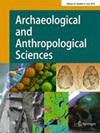Assessing seasonality and mobility from a fragmented faunal assemblage: the case of Amud Cave (Israel)
Abstract
In this paper we investigate the seasonality of site occupation at Amud Cave (Israel). This site presents a long sedimentary sequence featuring two main late Middle Paleolithic occupation phases (70 – 55 Ka BP) rich in anthropogenic remains, and displaying very high densities of lithic artifacts, faunal remains and evidence of combustion. The abundance of these features appears high relative to the thickness of the sequence, thus raising the question of the duration and frequency of site occupation(s). We aim here to unravel this issue implementing a multiproxy approach to the dental fraction of the faunal assemblage. Combining teeth replacement and wear patterns coupled with micro- and mesowear analyses, we provide insights into the seasonality of occupation and hunting strategies at the site. We found that hunting activities at Amud Cave were conducted mainly in the course of the winter months with possible expansion into the late fall and early spring. This result is consistent with regional and local climate reconstructions and resources procurement locations evidenced in previous works. Assuming a fast depositional rate, we suggest that the sequence results from frequent seasonal returns to the site, forming a palimpsest of short-term occupations. This scenario is compatible with settlements and mobility patterns inferred for the late Middle Paleolithic in the Southern Levant.

 求助内容:
求助内容: 应助结果提醒方式:
应助结果提醒方式:


